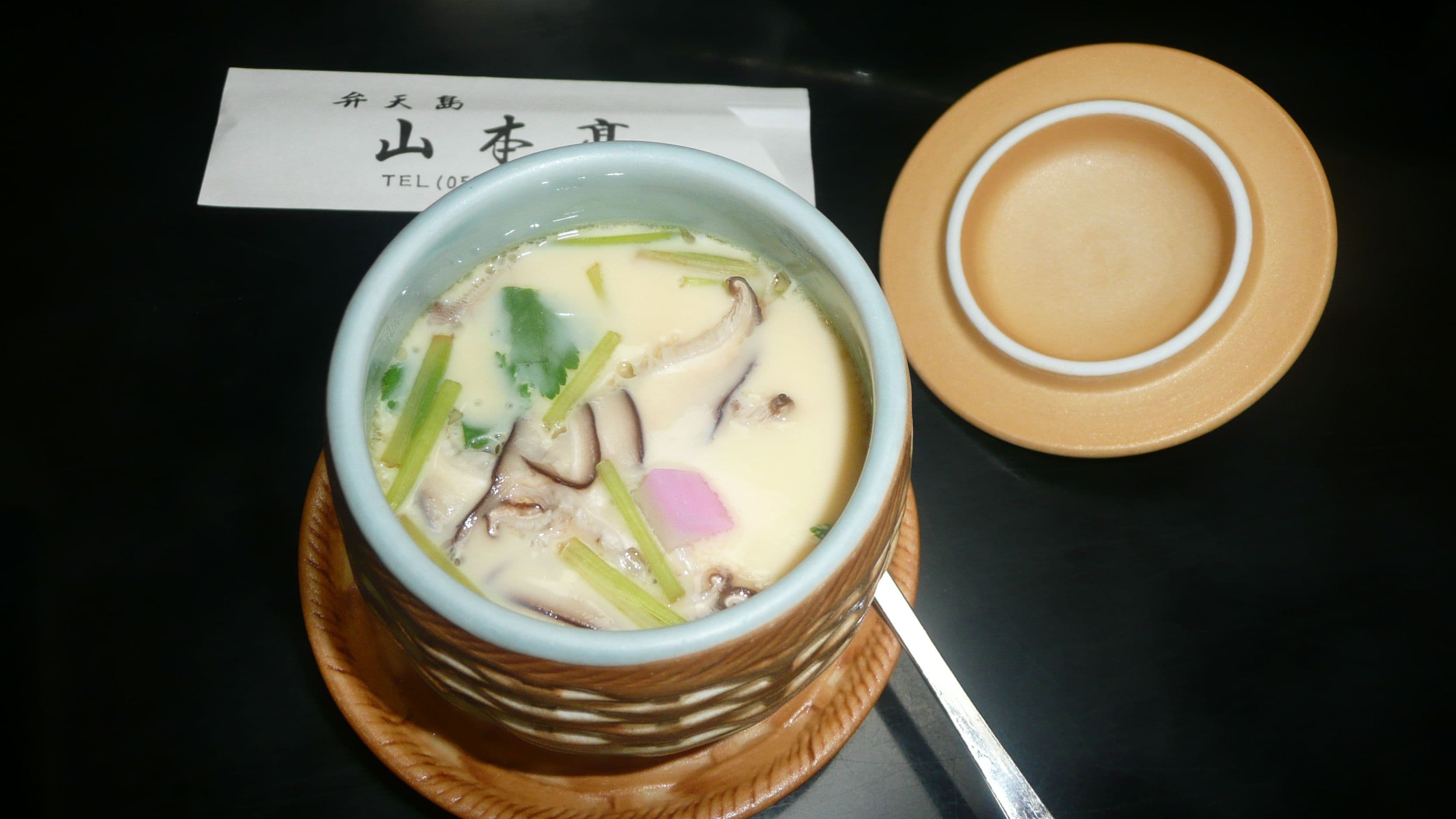
Chawan-mushi
茶碗蒸しChawan-mushi is a traditional Japanese dish that is popularly served as an appetizer or as part of a multi-course meal. The name chawan-mushi literally translates to "steamed in a teacup," as the dish is typically served in a small cup or bowl.
The dish is a type of egg custard that is flavored with dashi, a broth made from simmering bonito flakes and kelp. Other ingredients may include shiitake mushrooms, kamaboko (fish cake), shrimp, chicken, and ginkgo nuts. The ingredients are mixed into the custard and then steamed until it is set.
The texture of chawan-mushi is silky and smooth, with a delicate and savory flavor. It is often served with a small spoon, and the dish is typically eaten by scooping the custard out of the cup.
Chawan-mushi has a long history in Japanese cuisine, with records of the dish dating back to the Edo period (1603-1868). It is believed to have been influenced by Chinese steamed egg dishes, which were introduced to Japan in the 16th century.
In addition to being delicious, chawan-mushi is also considered to be a healthy dish. It is low in calories and high in protein, making it a popular choice among health-conscious diners.
Chawan-mushi can be found in many Japanese restaurants, and it is also easy to make at home. There are many variations of the dish, with different ingredients and flavors, so it is a versatile dish that can be customized to suit individual tastes.
Last Updated: